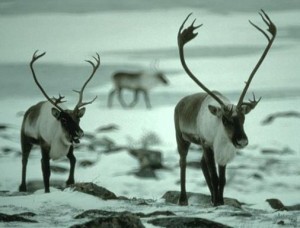We have much more to do and your continued support is needed now more than ever.
Protect Alaska’s Duck Factory!
 In the northwest corner of the northwestern-most state in the union lies the misnamed National Petroleum Reserve – Alaska (“Reserve”). Well, the Alaska part is right, but the rest of it, not so much.
In the northwest corner of the northwestern-most state in the union lies the misnamed National Petroleum Reserve – Alaska (“Reserve”). Well, the Alaska part is right, but the rest of it, not so much.
Contrary to the image conjured by its name, the Reserve is actually a place of unparalleled wildlife habitat supporting a wildly diverse and spectacular array of creatures. Caribou, grizzly bears, wolves, wolverines, musk ox, walrus, seals, polar bears . . . the iconic wildlife of the Arctic are all well-represented in the Reserve. But the wildlife that occurs in the most staggering numbers – and probably the most familiar to folks in the 48 states – are the millions of migratory birds that summer in the Reserve and then fly south to almost every state in the nation.

Surprisingly, there’s not much oil in the Reserve – enough for about a month at the current U.S. consumption rate according to the U.S. Geological Survey. The Obama Administration is currently deciding how much of the Reserve’s wildlife habitat to protect, and how much to lease to the oil companies. Given the abundance and diversity of wildlife at stake, and the relatively minimal oil resource, National Wildlife Federation supports a balanced approach that protects the most important habitat while allowing careful oil development where appropriate.
![]() Tell the Bureau of Land Management to protect crucial wildlife habitat in the Reserve.
Tell the Bureau of Land Management to protect crucial wildlife habitat in the Reserve.





















